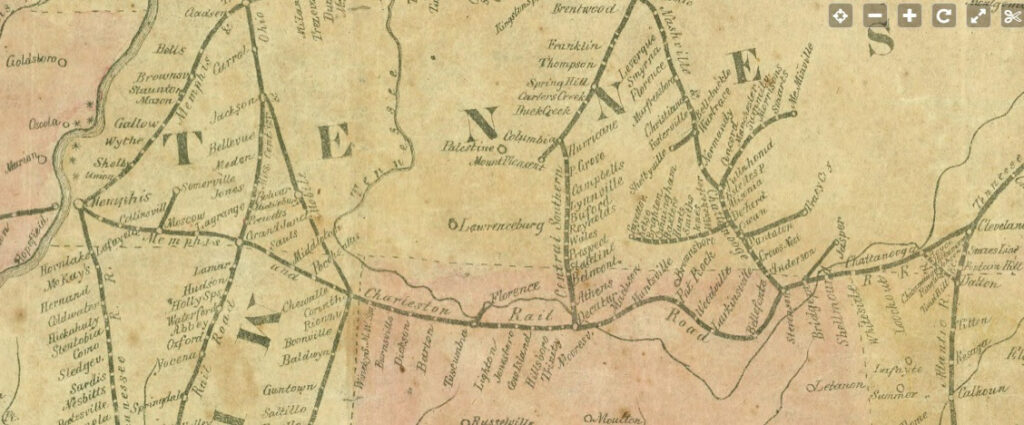By late in 1863, the Union army occupying West Tennessee strongly defended the Memphis and Charleston Railroad, which ran eastward from Memphis through Moscow. Federal infantry, including the U.S. Colored Troops of the 2nd West Tennessee Infantry, manned a nearby fort. It guarded a large wooden railroad bridge and a plank wagon bridge that both spanned the Wolf River. Union guards in rifle pits there protected State Line Road (present day Highway 57). At midday on December 4, 1863, Union Col. Edward Hatch’s cavalry brigade passed by here heading west from a week-long patrol.

Pvt. Augustus Hurff, 6th Illinois Cavalry described what happened next, “We were returning to our camp at Germantown….marching without an advance guard, which was very careless. We had no sooner crossed the bridge than we were fired upon from ambush. This threw our forces into a panic. They forced us back to the river; we were ordered to draw our sabers and charge…. but the rebels were reinforced [by Col. L.S. Ross’s Texas Cavalry Brigade] …we ounted and fought as infantry. Many of our horses were shot in the river as were a great number of our men. The river seemed like running blood instead of water. We fought until we were out of ammunition.”
Confederate Generals Stephen D. Lee and James R. Chalmers commanded the cavalry that made the sudden assault, planning to burn the railroad bridge. Union General Stephen Hurlbut, commander of the 16th Army Corps, Memphis, had recently warned that “Lee is the dangerous man.”
Fighting continued all afternoon. The U.S. Colored Troops of the 2nd Regiment, West Tennessee Infantry, under the command of Col. Frank Kenrick, fought from rifle pits and earthworks on the east bank of Wolf River. The unit was instrumental in repelling the Confederate attack. The USCT unit earned special notice for bravery from General Hurlbut, who issued public praise, citing the regiment’s “gallant and successful defense of the important position.”
Union Col. Hatch suffered a bullet through the lung but survived. Near sunset, Union Col. W.H. Morgan’s infantry brigade arrived by train from LaGrange and drove off the Confederates. About 3,000 Confederates and 5,000 Federals had been engaged. Later, the town of Moscow was burned leaving only two residences.

Another engagement in Moscow occurred on February 18, 1862 and is included in the 122 sites noted in TCWPA’s Statewide Preservation Plan. Check out more battlefield sites and the new interactive map at https://www.tcwpa.org/preservation-plan/.
This project has been funded by a grant from the Wars Commission Grant Fund, administered by the Tennessee Wars Commission, the Tennessee Historical Commission, Department of Environment and Conservation.


